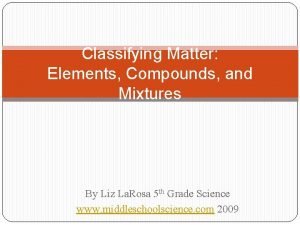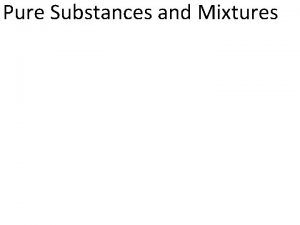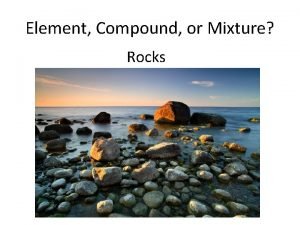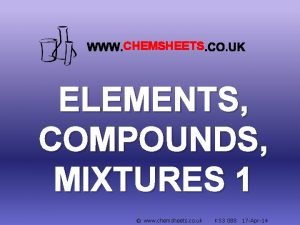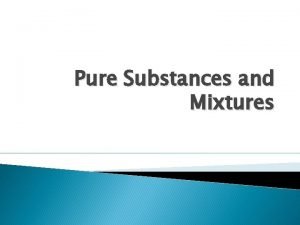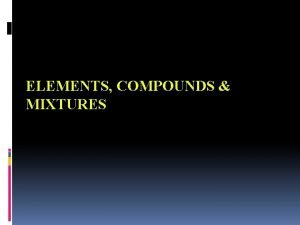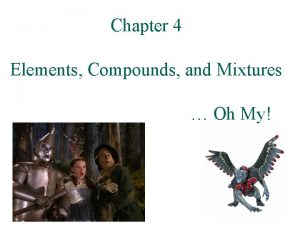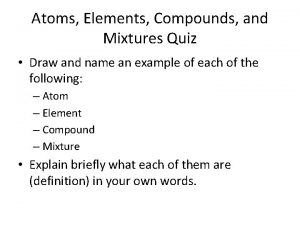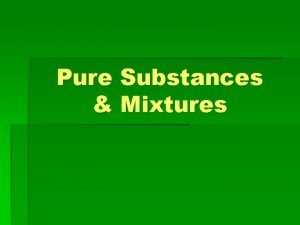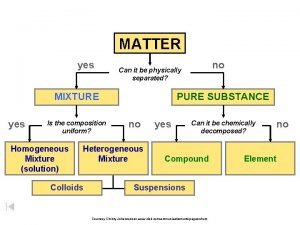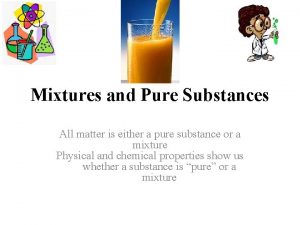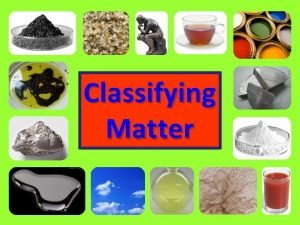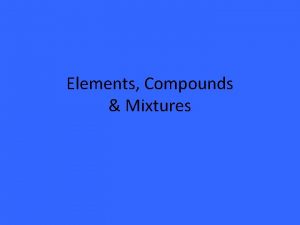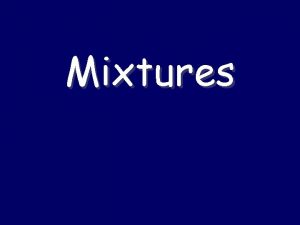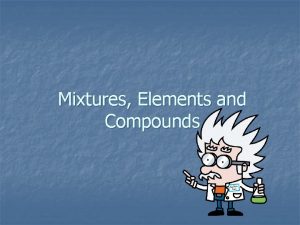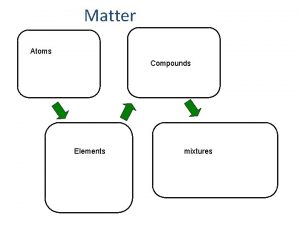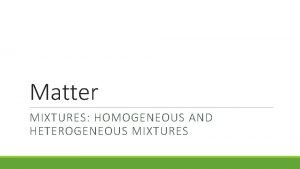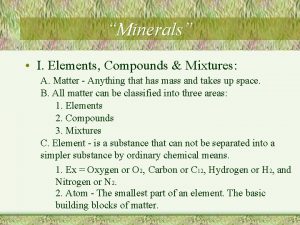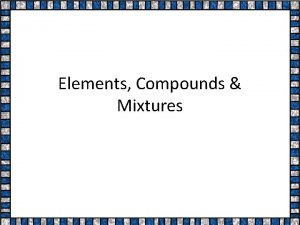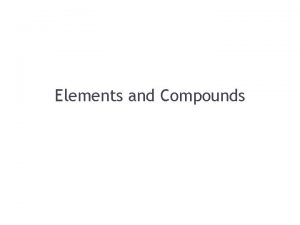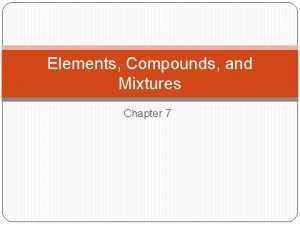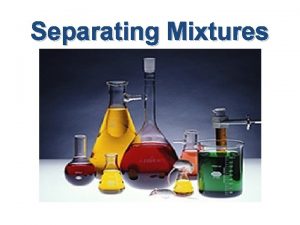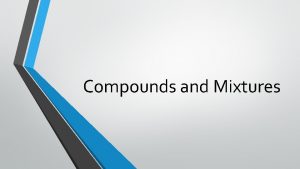Matter Elements Compounds Mixtures Matter Matter is anything
















- Slides: 16

Matter, Elements, Compounds, & Mixtures

Matter • Matter is anything that has mass and takes up space.


There are 3 states of matter

1. Solid • Fixed shape AND volume that does not change • Intermolecular forces are very strong • Motion of the molecules is very small (molecules vibrate around a fixed location)

2. Liquid • Fixed volume, but a shape that can change • Intermolecular forces are not as strong as in a solid • Molecules are closely packed, but do not have fixed positions (molecules “slip and slide” past one another allowing liquids to flow)

3. Gas • No fixed shape OR volume • Intermolecular forces are weaker in gases than in solids or liquids • Molecules move about freely without being held together (this allows gases to expand to fill any container they are in)

Atoms and Molecules The atom is the basic building block of matter, and it is the smallest unit of an element. A single atom has mass and takes up space, and that all matter is composed of atoms.

An atom has three parts: 1. Electron: negative charge, located in the electron cloud 2. Proton: positive charge, located in the nucleus 3. Neutron: no charge/neutral, located in the nucleus • Protons and neutrons make up the center of an atom (the nucleus) and are held together really tightly by bonds.

Elements • Elements are composed of one kind of atom • Elements are pure substances that cannot be changed into simpler substances • All forms of matter are composed of one or more of the elements

Compounds • Compounds are pure substances that are composed of two or more types of elements that are chemically combined • Compounds can only be changed into simpler substances called elements through chemical changes • Molecules can either be elements (H 2, O 2, N 2) or compounds (HCl, H 2 O, CO 2)


Mixtures • Mixtures are physical combinations of two or more different substances that keep their own individual properties and are combined physically (mixed together) • Mixtures can be separated by physical means (filtration, sifting, or evaporation)

Mixtures may be heterogeneous or homogeneous • In a heterogeneous mixture, which is not uniform throughout, the individual substances can be visibly distinguished. • EX: Tossed salad, granite, iced tea • In a homogenous mixture, which is uniform throughout, the substances are evenly mixed and cannot be visibly distinguished. • EX: Air, steel, clear salt water

Homogeneous or Heterogeneous?

Homogeneous or Heterogeneous?
 Classifying elements compounds and mixtures
Classifying elements compounds and mixtures Mixtures worksheet
Mixtures worksheet Pure substances and mixtures worksheet answers
Pure substances and mixtures worksheet answers Are rocks a mixture or compound
Are rocks a mixture or compound Difference between mixture and compund
Difference between mixture and compund Chemsheets
Chemsheets Mixtures graphic organizer
Mixtures graphic organizer Is sterling silver a pure substance
Is sterling silver a pure substance Elements compounds and mixtures oh my
Elements compounds and mixtures oh my Elements compounds and mixtures quiz
Elements compounds and mixtures quiz Are compounds pure substances
Are compounds pure substances Is the composition uniform?
Is the composition uniform? Compounds vs mixtures
Compounds vs mixtures Ionic metallic and covalent bonds venn diagram
Ionic metallic and covalent bonds venn diagram Mechanical mizture
Mechanical mizture Matter is classified as ____ and mixtures
Matter is classified as ____ and mixtures Mass vs matter
Mass vs matter
